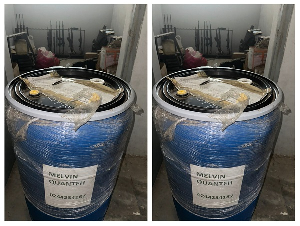
The Central Bank is very optimistic that country will record single digit inflation by the end of 2013. The Central Bank’s latest inflation forecast shows that inflation is likely to be close to the upper limit of the Bank’s target range of 9.0 percent ±2 by the end of the year.
The forecast shows that inflation is likely to moderate during the third quarter before ending the year within the upper band of the target and declining to a range of 6 -10 percent by the end of June 2014.
According to the Central Bank, however, there are uncertainties surrounding the inflation projections which could potentially lead to inflation drifting beyond the upper target band by the end of the year. The key upside risk at this stage is the behavior of the exchange rate and how this is contained in the periods ahead given its incipient impact on expectations.
Other upside risks include the lingering fiscal pressures, challenges in the energy sector, effect of weakening commodity prices on the external sector and the likelihood of full cost recovery in the energy sector and how all these would feed into inflation expectations.
The pace of depreciation of the local currency particularly in April and May was gradually pushing up inflation expectations and therefore is likely to feed through to consumer prices in the coming months through higher import prices. Although the pace of depreciation in the first quarter was slower than the same period of 2012, it continues to pose a threat to macroeconomic stability and could potentially dislodge the disinflation process if not tamed.
The anticipated fiscal consolidation intended for 2013 appears not to have taken hold yet as new pressure points are emerging in relation to shortfalls in domestic revenue and donor disbursements as well as deferment of some payments. The intended fiscal measures to address the revenue shortfalls and expenditure rationalization are timely and must be vigorously pursued to support the consolidation efforts since anything short of this could generate some considerable amount of added stimulus to the economy.
Inflation increased during the first quarter, moving from 8.8 percent in December 2012 to 10.4 percent by March 2013 and further up to 10.6 percent in April. The higher inflation was due to the combined effect of demand and supply side factors, which have begun to transmit to higher inflation expectations.
The first quarter saw an increase in the price of petroleum products in the range of 15-50 percent. Apart from its direct impact on consumer prices, the upward petroleum price adjustments also pushed up transportation costs, which in turn impacted on prices of most food staples and non-food items.
Second, the expansionary fiscal policy as observed in 2012, particularly during the last quarter, heightened inflationary pressures. Third, the energy sector challenges, which started last year, had adverse consequence on prices through cost push inflation in the first four months of the year. Finally, the cyclical lean food season also impacted on food inflation in the period.
At the last Monetary Policy Committee meeting, the Policy Rate was increased from 15.0 percent to 16.0 percent on a number of concerns. The Committee observed higher risks to the external outlook based on the transmission of weakening commodity prices on the international markets to lower export receipts and in turn further widening of the trade deficit in the first quarter of 2013.
This has resulted in heightened exchange rate pressures on the foreign exchange market. Although the review period has seen less volatility of the exchange rate compared with what was observed a year earlier, the increased rate of depreciation in the April (0.6%) and mid-May (1.5%) were of concern to the Committee.
Of more significance is how these events would influence inflation expectations. The latest round of survey results show that producer and consumer inflation expectations are elevated, driven mainly by rising inflation and energy sector challenges. Again, while the fiscal consolidation expected in the year has not generally taken hold, some pressure points have emerged. These are associated with shortfalls in domestic revenue and donor disbursements as well as deferment of some payments in the first quarter of 2013.
The Committee, however, viewed efforts to address the revenue shortfalls and expenditure rationalisation (including a freeze on new projects) to strengthen the fiscal consolidation process in the months ahead as positive. In terms of real sector developments, the first quarter of the year saw reduced tempo in economic activity. The Bank’s CIEA showed a slowdown in output growth, opening up a negative output gap, a condition that should help weigh down CPI inflation in the short term. Also, the recent survey results point to softened overall business and consumer sentiments while growth prospects have weakened in the economy amid heightened inflationary expectations.












